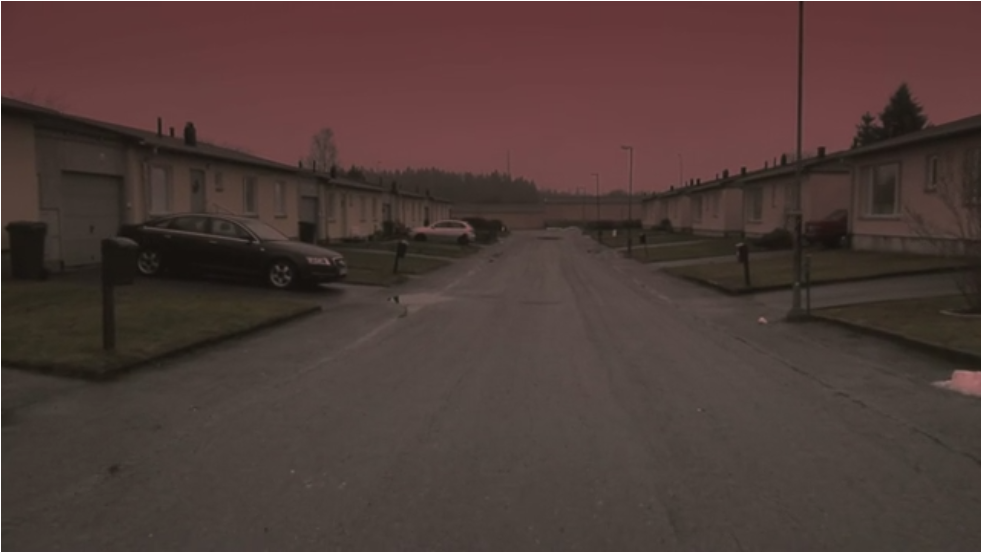I am enjoying watching some video art on this site today.
Here are two that I particularly liked.
I loved the representation of the vicissitudes of human experience, somehow portrayed so succinctly through a bit of clay and paint. Aren’t artists clever?! Although there is no soundwork in this piece, I did appreciate the careful, thoughtful syncing of her animation with the song she used. This song-synchronisation is a basic but very effective way of working the chemistry between sight and sound.
I realise it is what I was doing here – and the interesting thing was most lay-people of my acquaintance did not respond to the musical setting of the poem at all when I made it public, but when synced with pictures that told a contemporary version of the story Auden was exploring, the same people reacted very strongly. Many, in fact, said the song made them cry. But of course, it wasn’t just the song. And it wasn’t just the pictures, as these images have been familiar to us all from the news for four years now. It was the entire experience.
Closed Circuit (in the Middle of Sweden) by Mattias Haerenstam
Now the sound in this one is designed – by the artist himself, I think – and it is worth highlighting a few of the devices used.
- A low, rushing wind sound appears at the beginning (before we see the place, even), but this sound is not reflected in the very, very still, dank weather conditions depicted. What then, is its function? The place is rather desolate and the theme of the piece would at first glance appear to be about how we can be literally consumed by a place and a repetitive routine tying us there, pulled deeper and deeper in by economic or social realities, or psychological state, binding us to them perhaps.
- As the camera moves down the street, we do not hear footsteps or engine sound. This first of all suggests to me that the place is more the subject than any observer within it. We do, after all, hear background traffic and the footsteps of a man passing the end of the road (rather closer than we should, making it more claustrophobic). Or, perhaps we are simply being asked to focus on the ambiance and the mood it lends. Or, more likely I think, the space is being cleared sonically for us to hear and feel…
- The impending event of consumption. As the ‘gravity well’ [‘gravity well’ defined here!] of the hole is entered, we begin to hear the new ambiance associated with inside the hole/digestion, as though the sound is the pull of the suction towards it. (Sounds like maybe a reversed stretched gong or something, but I don’t know!)
- The internal sounds. The heartbeat begins after we first enter the throat/gut. The clacking teeth slightly set mine on edge!
- Interestingly, the camera is not swallowed first time around, but moves over the epiglottis and passes through the vocal folds. The street-mouth should have ‘choked’ – which is perhaps why we appear back at the start of another loop of the closed circuit, despite the street now being body-coloured and the continuation of the heartbeat suggesting we remain ‘inside’ the ‘creature’. Anyway, I love the way the artist makes the vocal folds look so evil as we approach them – and the little hiss of air as we pass through is a great, evocative sound effect, echoed by…
- The release of air at the end of the sequence inside the gut, when we pass through the rectum and the sphincter releases us. Lovely little sound of a temporary vacuum being equalized and, of course, we immediately think of passing wind or fecal matter.
I really liked this one a lot and found I was able to watch it several times in a row to unpick the sound design without tiring of it at all.
Gravity wells – sonic Rossini crescendo – building a frequency tower
The sonic representation of a gravity well is something I should like to have an opportunity to explore myself. It occurred to me that this could be used effectively as an emotional device – getting pulled (perhaps reluctantly) into a state of mind or situation or decision of immense emotional gravity.
This is often done in Hollywood with ‘whooshes’, ‘rises’ and the like. There is always a crescendo involved. I’d rather like to try a kind of ‘Rossini Crescendo’, adding sound systematically to create a sense of getting closer to something emotionally.
Or perhaps I could try deconstructing a sound rich in overtones to its constituent frequencies. I could then build the noise back up from scratch like an edifice, revealing it as I construct. I wonder if this would have a quality of revelation to it?
Image for this post taken from Closed Circuit (in the Middle of Sweden) by Mattias Haerenstam, 2011
